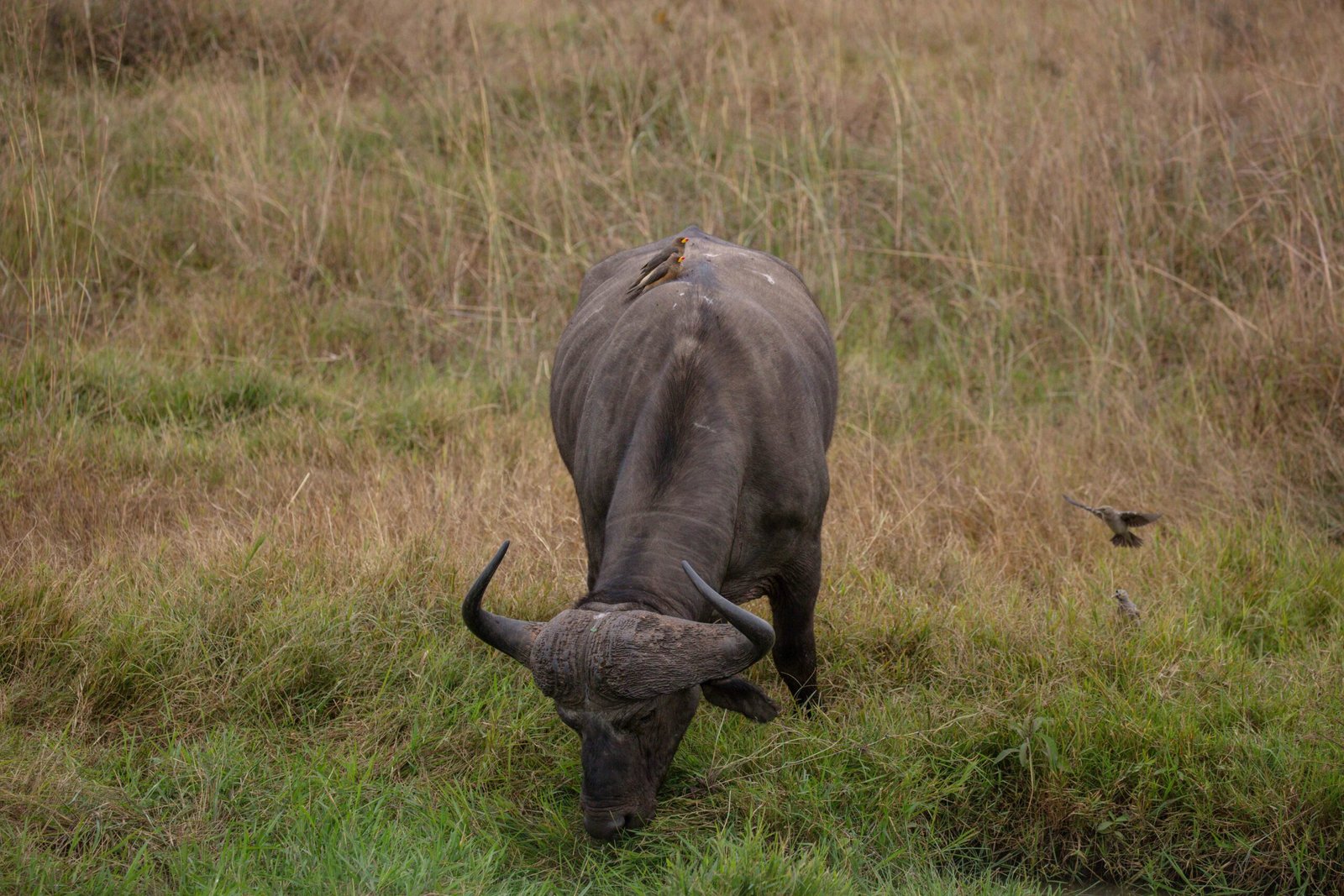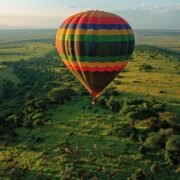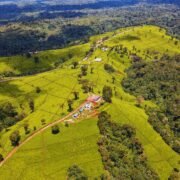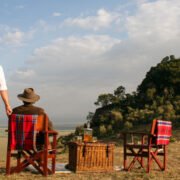
First-Time Safari? Here’s How to Guarantee a Big 5 Sighting in Kenya
Introduction: Why the Big 5 Is the Ultimate Safari Goal
Your first safari in Kenya is bound to be unforgettable. From the roar of a lion at dusk to the majestic silhouette of elephants crossing the savanna at sunrise, the experience is life-changing. But for many, the true achievement lies in spotting the Big 5 — the lion, leopard, elephant, buffalo, and rhinoceros.
Originally dubbed by hunters as the most dangerous animals to track on foot, these iconic species have become a benchmark for safari success. Seeing all five in one trip is not just thrilling — it’s totally possible in Kenya if you plan it right.
In this detailed guide, we’ll walk you through exactly how to guarantee your Big 5 in Kenya sightings as a first-time visitor, from choosing the right parks to booking with expert guides and packing like a pro.
What Are the Big Five?
Let’s start by getting to know your wildlife targets:
- Lion – Kenya’s most famous predator, often spotted in prides on open plains.
- Leopard – Elusive, solitary, and most active at night, making it a challenging but rewarding find.
- Elephant – Massive, majestic, and often seen in herds, especially in swampy areas.
- Buffalo – Unpredictable and powerful, commonly found in large groups.
- Rhinoceros – Critically endangered but protected in several Kenyan parks.
Together, these five represent the essence of wild Africa — power, beauty, and mystery.
Why Kenya is the Best Place for Big 5 Sightings
Few countries offer such diverse and concentrated wildlife experiences as Kenya. It is one of the only destinations where you can potentially see all five animals on a single safari — sometimes even in one day!
What Makes Kenya Ideal:
- Rich wildlife density in world-famous reserves.
- Year-round accessibility to game parks.
- A wide range of safari options for every budget.
- Expert guides trained in tracking the Big Five.
- Extensive conservation programs to protect endangered species.
Whether you’re looking for a luxury lodge in the Maasai Mara or a tented camp near Mount Kenya, you’ll find a safari that suits your style and budget.
Top Parks in Kenya to See the Big Five
1. Maasai Mara National Reserve
- Why it’s ideal: The Maasai Mara has the highest lion density in Kenya, abundant elephants and buffalo, and regular leopard sightings along the rivers.
- When to go: July to October for the Great Migration or January to March for fewer crowds.
- Bonus: Exceptional big cat encounters make it perfect for photographers.
- Tour match: 5-Day Big Five Safari
2. Ol Pejeta Conservancy
- Why it’s essential: This is the best place to see both black and white rhinos in the wild. It also hosts all other Big Five animals.
- Extras: Visit the last two remaining northern white rhinos and the Sweetwaters Chimpanzee Sanctuary.
- Conservation focus: Revenues support anti-poaching and community development.
3. Amboseli National Park
- What to expect: Large herds of elephants set against the backdrop of Mount Kilimanjaro — a photographer’s dream.
- Why it matters: Offers some of the most intimate elephant encounters in Africa.
- Leopards and lions are harder to spot here but still present.
- Suggested read: Luxury Camps and Lodges in Amboseli
4. Lake Nakuru National Park
- Strength: Stronghold for rhinos — both black and white — and home to tree-climbing lions.
- Extra: Flamingos and other bird species add to the variety.
5. Nairobi National Park
- Unique factor: Only capital city in the world where you can see lions, rhinos, and buffalo just minutes from the airport.
- Ideal for: A quick Big 5 introduction if your trip starts or ends in Nairobi.
Best Safari Itinerary to Maximize Big 5 Sightings
A well-thought-out itinerary is the key to seeing the Big 5 in Kenya. Here’s a sample plan that maximizes your chances:
Sample 6-Day Safari Itinerary
- Day 1: Arrive in Nairobi. Afternoon game drive in Nairobi National Park.
- Day 2–3: Drive to Ol Pejeta Conservancy for rhino tracking and Big 5 viewing.
- Day 4–6: Transfer to Maasai Mara for the ultimate Big Cat experience and migration drama.
- Optionally Add: Amboseli or Samburu for elephant and leopard-focused extensions.
See similar itineraries on Stawi Adventures
When is the Best Time to See the Big Five in Kenya?
Kenya’s wildlife is active year-round, but the dry seasons offer the highest visibility and best chance for sightings:
- July to October: Peak dry season and the Great Migration — excellent for lions, leopards, and massive buffalo herds.
- January to March: Calving season for herbivores — predators are more active.
- April, May, November: Rainy seasons — more challenging due to muddy roads and taller grass, but quieter and greener.
No matter when you go, Kenya delivers unforgettable game drives — but planning around these windows increases your odds.
The Role of Expert Guides in Big 5 Safaris
Even the best itinerary can fall flat without a knowledgeable guide. Here’s why expert guidance matters:
- Local tracking skills make all the difference in locating elusive leopards or camouflaged rhinos.
- Communication networks between guides alert others of recent sightings.
- Conservation knowledge enhances the educational aspect of your safari.
- Safety and comfort in navigating terrain and animal behavior.
Choose safari companies like Stawi Adventures, which employ top-tier guides and prioritize guest satisfaction.
How to Increase Your Big 5 Spotting Chances
Want to tilt the odds in your favor? Here’s how:
- Go on early morning and late afternoon drives: This is when animals are most active.
- Stay longer: A 5 to 7-day safari increases the likelihood of seeing all five.
- Stay in private conservancies: These allow night drives and off-road exploration.
- Use binoculars: A good pair (8×42 or 10×42) is essential for spotting far-off cats or rhinos in the bush.
- Bring a good camera: A DSLR with a 200mm+ lens will help capture the moment.
Top Safari Tips for First-Timers
- Pack neutral colors: Khaki, olive, and beige help you blend into the environment.
- Avoid bright whites and bold prints: These can distract or alert animals.
- Bring layers: Mornings are chilly; afternoons can get hot.
- Don’t expect instant sightings: Patience and luck are part of the thrill.
- Respect the rules: Never pressure guides to get too close to wildlife.
Add-On Experiences to Enhance Your Safari
If you want to elevate your Big 5 journey, here are some unforgettable options:
- Hot Air Balloon Safari over Maasai Mara: Watch wildlife from above at sunrise. See the cost guide
- Luxury Honeymoon Safari: Perfect for couples looking for romance in the wild. Explore options
- Flying Safari: Skip long drives by flying between destinations. Why choose this?
- Rhino Tracking: Get up close with rangers in Ol Pejeta. Top rhino tracking spots
Responsible and Ethical Safari Practices
As you chase the Big Five, keep conservation front and center:
- Support eco-certified lodges and community conservancies.
- Avoid littering or making loud noises during drives.
- Don’t crowd animals or request guides to chase them.
- Choose tour companies that contribute to anti-poaching and education programs.
Ethical safaris help preserve Kenya’s wildlife for future generations — and ensure a more authentic experience for you.
Conclusion: The Big 5 is Just the Beginning
Your first-time safari in Kenya is about more than just the Big 5 — though seeing them is thrilling. It’s about immersing yourself in nature, supporting conservation, and connecting with cultures and landscapes unlike anywhere else on Earth.
With the right itinerary, timing, and expert guidance, a guaranteed Big 5 sighting is within your reach. But don’t stop there. Let the experience awaken your love for the wild — and maybe even spark your return for more.
🌍 Ready to plan your Big 5 safari? Explore custom packages at Stawi Adventures






